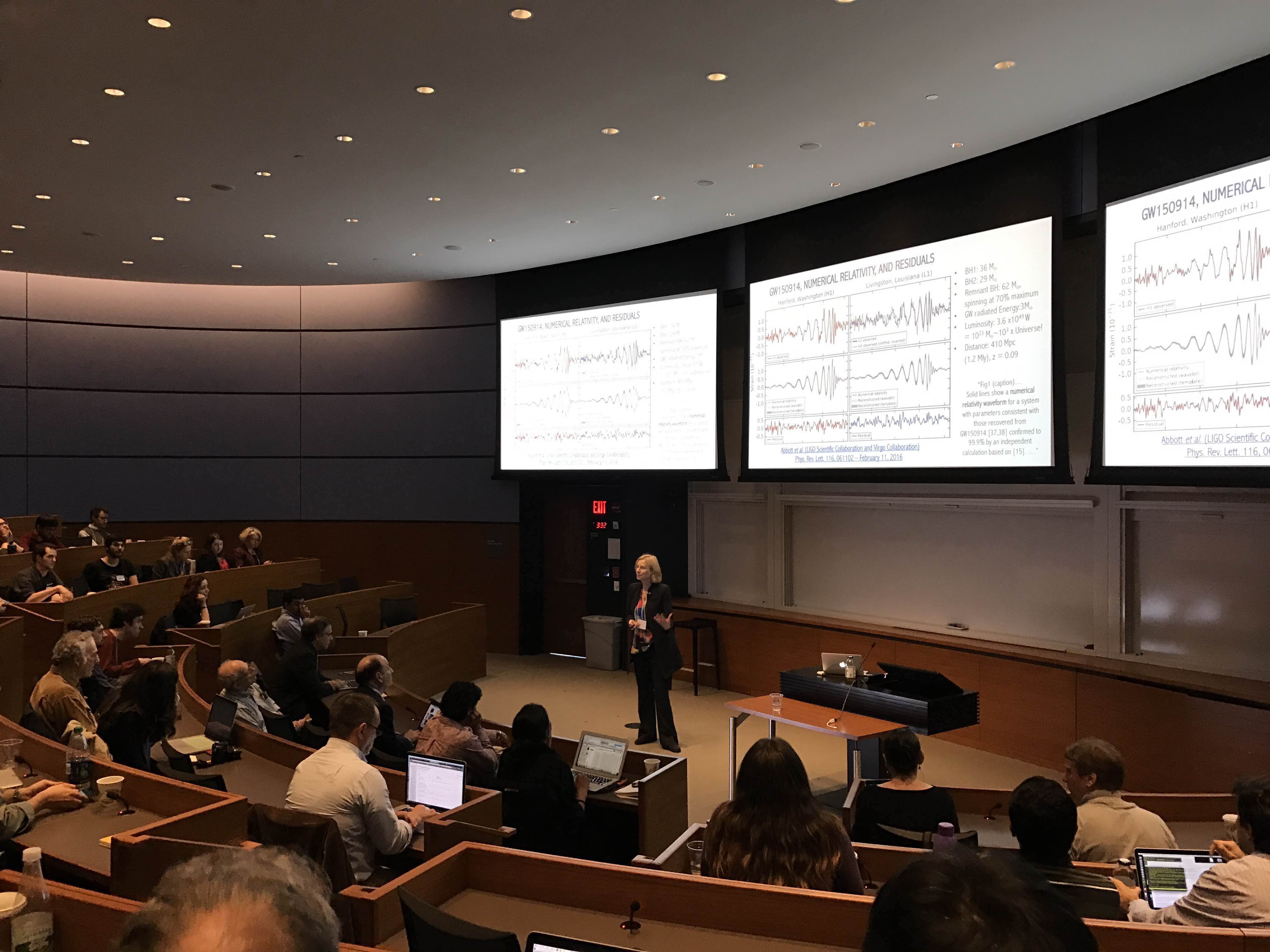The third annual Gruber Cosmology Conference took place at Yale on October 7th, honoring discoveries advancing our understanding of the universe. This year’s Gruber Prize recipients were Rainer Weiss, Kip Thorne, and Ronald Drever, the leading scientists on the LIGO collaboration, which made the groundbreaking discovery of gravitational waves. The conference began with a history of gravitational waves, after which Weiss explained how the LIGO project worked. Speakers also highlighted upcoming detectors in Europe, India and Japan, which aim to pinpoint the origin of gravitational waves.
The afternoon session outlined the impact of the discovery. Thorne described the new science we can probe with the help of gravitational waves, from learning about how the very early Universe grew, to understanding spinning and colliding black holes. Harvard radio astronomer Shep Doeleman closed the conference with prospects for how we can directly image black holes and their power as gravitational lenses, which bend light from sources behind them, to directly image black holes.

The presenters all spoke of their work as a conversation across centuries with the father of general relativity, Albert Einstein. What would Einstein have said if he heard of the LIGO observation? Thorne guessed he would try understanding the black hole merger that caused it, while Weiss thought he would ask how the equipment worked. Doeleman took a step back. We knew general relativity was correct before the gravitational wave detection, he said, as GPS wouldn’t work without it. If we were to present a map app to Einstein, he would most likely wonder, “What is a phone?”
